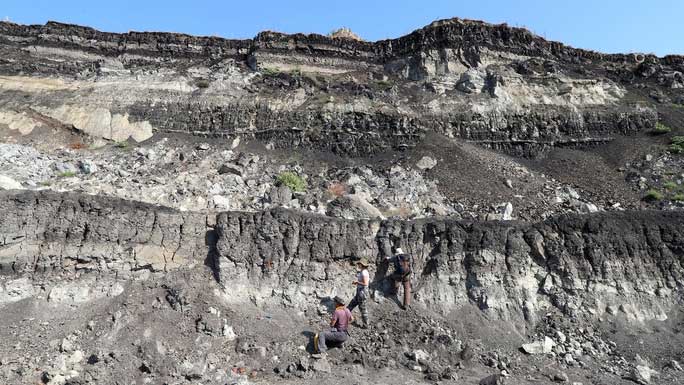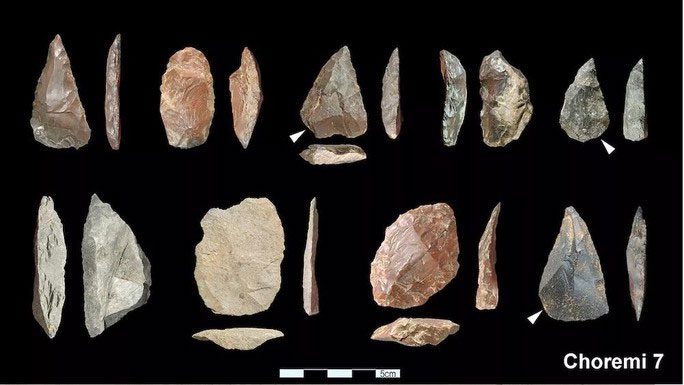The Megalopolis region of Greece not only contains an ancient city over 1,600 years old but also hides the territory of at least one “ghost species” that existed 400,000 years before our Homo sapiens.
A five-year excavation led by the Greek Ministry of Culture and Sports and the American School of Classical Studies in Athens has revealed a wealth of significant treasures in the form of stone tools from three groups of people dating back 280,000 years, 400,000 years, 450,000 years, and 700,000 years.
All of these findings were located around the area of Megalopolis in the province of Arcadia, Greece, where an ancient prosperous city of the same name was established in the 4th century AD.

Archaeologists working at sites around Megalopolis – (Photo: GREEK MINISTRY OF CULTURE AND SPORTS).
In addition to the ruins of the ancient city, archaeologists have long discovered evidence of even older human remains, believed to be early Homo sapiens – essentially our species.
However, recent excavations have changed everything. Homo sapiens first appeared on Earth just over 300,000 years ago, so the older sites cannot be attributed to our ancestors but belong to a “ghost species” that remains unidentified.
The Choremi 7 site, dating back about 280,000 years, is the only location that could belong to Homo sapiens, containing stone tools and deer bones showing signs of cut marks.
Tripotamos 4, which is 400,000 years old, has numerous stone tools with a clearly improved manufacturing technique compared to older sites. Marathousa 2, dating back 450,000 years, shows signs of a “ghost species” hunting and possibly consuming hippos. Meanwhile, Marathousa 1, also of the same age, provides evidence of elephant hunting.
Most notably, the Kyparissia 4 site, which is 700,000 years old, contains the largest collection of stone tools and remains of extinct relatives of deer, hippos, rhinos, elephants, and monkeys today, most of which are significantly larger than their modern relatives.
This area maintained a rare warmth in Europe during the “Great Ice Age” that occurred from 500,000 to 300,000 years ago.

Stone tools excavated from Choremi 7 – (Photo: GREEK MINISTRY OF CULTURE AND SPORTS)
The research not only demonstrates that this area served as a refuge for many species during Europe’s harsh periods but also preserved them under excellent conservation conditions – said paleobiologist Katerina Harvati from the University of Tübingen (Germany), who leads the research part of the project in an interview with Live Science.
Diving deeper into these sites could help reconstruct a mysterious chapter of human history and the ancestral species that may have lived alongside – and sometimes interbred with – Homo sapiens in Europe.


















































